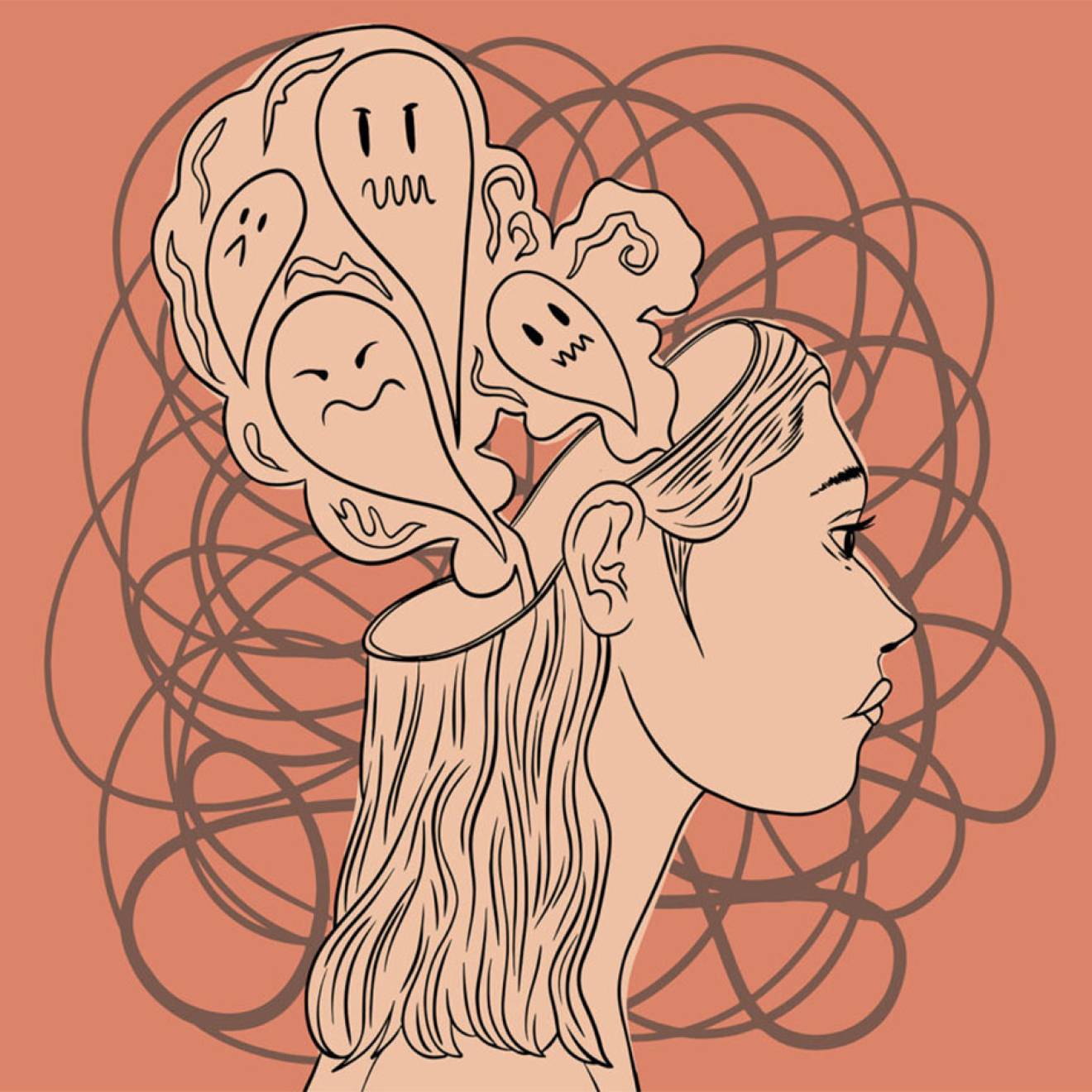Robin Keats, UCLA

The crack of wooden swords striking each other is crisply percussive and spare, a sound with echoes back to a feudal age. As the swords ritualistically knock together in sharp, angled blows, the sensei standing before his students on a second-floor racquetball court of UCLA’s John Wooden Center quietly calls out commands in Japanese.
“Ippon dachi” — first sword technique. “Nihon me” — second one. “Sanbon me” — third one.
Dressed in a traditional uniform of quilted and padded cloth, the half-dozen students obey as they practice their fluid movements, approaching, striking, blocking, retreating.
Shinkendo — the modern martial art of Japanese Samurai swordsmanship — “is the embodiment of philosophical exercise, bringing together mind, body and spirit,” says the sensei, Dr. Joseph M. Pierre, clinical professor of psychiatry and biobehavioral sciences and co-chief of the Schizophrenia Treatment Unit at the VA Greater Los Angeles Healthcare System. It has “a meditative component. For me, as a psychiatrist, that is part of its appeal.”
The appeal also may have something to do with an interest in things with blades. For when he’s not instructing students in UCLA’s Shinkendo Club on the art of the sword, Pierre might be found in the garage of his home in Calabasas, California, working with hammers and an anvil next to a blazing furnace — a set-up he has christened Tengu Forge in honor of a mythical Japanese creature with the head and wings of a bird and the body of a human — to fashion traditional Japanese knives. The metallurgy of the craft fascinates him; the beauty that reveals itself as the blades take shape inspires him; and the physicality of the work utterly absorbs him.
Centering his life with Shinkendo
Or maybe a part of the appeal for Pierre has to do with his heritage. “I am half-Asian, half-Caucasian,” he says. “When I was in college, I, like a lot of people at that age, wanted to learn about different religions, different spiritual practices. It was more from an intellectual standpoint than a religious one.” As an undergraduate at MIT, he began to explore East Asian philosophy and Zen Buddhism, with its strong connections to martial arts.
While his intellectual journey was leading him along a variety of spiritual paths, his academic journey was taking him in a distinctly scientific direction — hardly unusual for a child of two physicists (a brother also went into that field). “I wanted to be an oceanographer or something like that,” he says. Medicine was not originally on his radar, but he had, since adolescence, found himself attracted to the idea of psychiatry. “There’s something about psychiatry that’s sort of interesting and weird and a little dark,” he says. So after graduating with a degree in biology, Pierre shifted gears and enrolled in medical school at UCLA. His parents had reservations about his desire to pursue psychiatry. “Are you sure you don’t want to be a surgeon?” he recalls his mother asking.
But it proved to be a successful choice. In 2005, Pierre received Young Investigator awards from both the International Congress of Schizophrenia Research and the American College of Neuropsychopharmacology. In addition, his excellence as a teacher (he is associate director of residency education in the Jane and Terry Semel Institute for Neuroscience and Human Behavior at UCLA) has been recognized with several awards, including the 2012 UCLA NPI Housestaff Teaching Award.
His interest in martial arts began when he took lessons in kung fu at age 13. And he always found himself enticed by swords. “I wanted to own a Japanese sword, which is kind of a fantasy for a lot of young boys. But I wasn’t going to buy one until I learned how to use one,” he says. Pierre was introduced to Shinkendo in 2005 (this past August marked the 10th anniversary of his training). It offered what he calls a “blend” — philosophy, heightened mental acuity, mastery of a difficult skill and unity with the sword — that he could embrace. The knife-making started a few years later, when he found himself with time to fill while his future wife was on the East Coast finishing her training as a veterinary cardiologist. He had considered taking up Thai boxing but concluded he was too old to fight in a ring. “I decided to makes knives instead,” he says.
For Pierre, Shinkendo and knife-making are less about stress relief — “psychiatrists don’t get that stressed,” he says — than they are about centering his life. “The swords and the knife-making are so physical. There literally is no hands-on component in my work as a psychiatrist, so this provides a balance to what I’m doing,” he says. “It’s like a third arm, in a sense, one that’s involved in something other than writing or doctoring or philosophy.”
Like the carefully choreographed movements of Shinkendo, the forging and pounding of steel as he works it into the shape of a blade lock Pierre into a moment, one that simultaneously clears and focuses his mind. “Hammering hot steel all day ... blisters on my hands,” he rhapsodizes, with a smile of deep fulfillment. “It’s just so cool.”
This story originally appeared in the winter 2016 issue of U Magazine published by UCLA Health and David Geffen School of Medicine.

